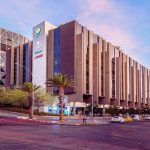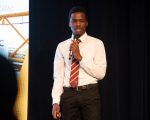Two of four green hydrogen pilot projects that were announced in 2022 have already yielded more than 300 jobs with production expected as early as this year, chairperson of the green hydrogen council, Obeth Kandjoze revealed last week.
Back in August 2021, following extensive discussions and negotiations with German, Namibia concluded a Joint Communiqué of Intent (JCoI) which availed a grant funding amounting to 40 million Euros to pilot green hydrogen projects. 30 million Euros was allocated under the JCol for the advancement of pilot initiatives in which four projects were announced in 2022, three of which have gone on to sign commencement contracts.
Of the three, the Daures Green Hydrogen Village has created more than 200 jobs while on the hand Cleanergy Hydrogen Facility and Academy has already created over 100 jobs. The third, the HyRail project is anticipated to commence in the latter part of the year.
“In the Tsiseb Conservancy, the Daures Green Hydrogen Village was the first undertaking. Most of the project’s development is carried out by young Namibians in collaboration with two universities, traditional authorities, and local communities. The green hydrogen village is projected to generate an annual output of up to 100 tons of green ammonia and more than 400 tons of green tomatoes during its pilot phase. The project is now 80% complete and will start producing green hydrogen and ammonia as early as July 2024. As of November 2023, the project has reportedly employed more than two hundred Namibians from more than (30) thirty small and medium-sized enterprises (SMEs), the majority of which are located in the surrounding communities,” said Kandjoze.
He went on to say that over 80% of the residents survive under 1 US$ per day – so green jobs for these communities are an mandatory welcome.
“The project concluded studies to develop green ammonia sulphate fertilizer and received interest from the World Food Program (WFP) and AgriBusdev to procure locally produced green fertilizer. Recent studies highlight the noteworthy future prospects of the Daures project: during its 4th phase this village has the capacity to manufacture and export up to 700,000 tons of green ammonia (approximately 30 % the size of Hyphen) at globally competitive prices by 2030.”
Speaking about the Cleanergy Hydrogen Facility, Kandjoze highlighted that the project will elevate the Erongo valley to the status of a global hydrogen hub in the subsequent project phases, courtesy of Giga-scale hydrogen production and bulk ammonia terminals on land that has already been identified.
“At the heart of Cleanergy Solution’s groundbreaking venture lies a 5MW solar park spanning 10 hectares, accompanied by a hydrogen production facility equipped with a 4MW Electrolyzer and 5MWh battery. The project aims to establish a one-of-a-kind hydrogen facility that directly harnesses self-generated solar energy to produce hydrogen, which is then publicly available at a refueling station.
“Furthermore, in-house fleet and trucks will be converted to dual-fuel technology, utilizing locally produced hydrogen. Preliminary statistics on the Cleanergy project show that over 100 Namibians are currently employed on site and many of the large, long lead items such as high-pressure hydrogen storage tanks and buffer tanks are already on site. All indications point to hydrogen production from this project starting in the 3rd quarter of this year!,” he said.
Lastly, Kandjoze expressed that after extensive negotiations, the contract of the HyRail project has been finalised.
“The project is spearheaded by TransNamib, Hyphen Technical and CMB Tech. and includes UNAM as an academic partner. This project will demonstrate the ‘use case’ of hydrogen in the rail transportation sector, in the form of dual fuel converted train. The locomotive conversion is anticipated to commence in the latter part of the year, and initial timelines suggest that it will be commissioned before the end of 2025,” he said.










